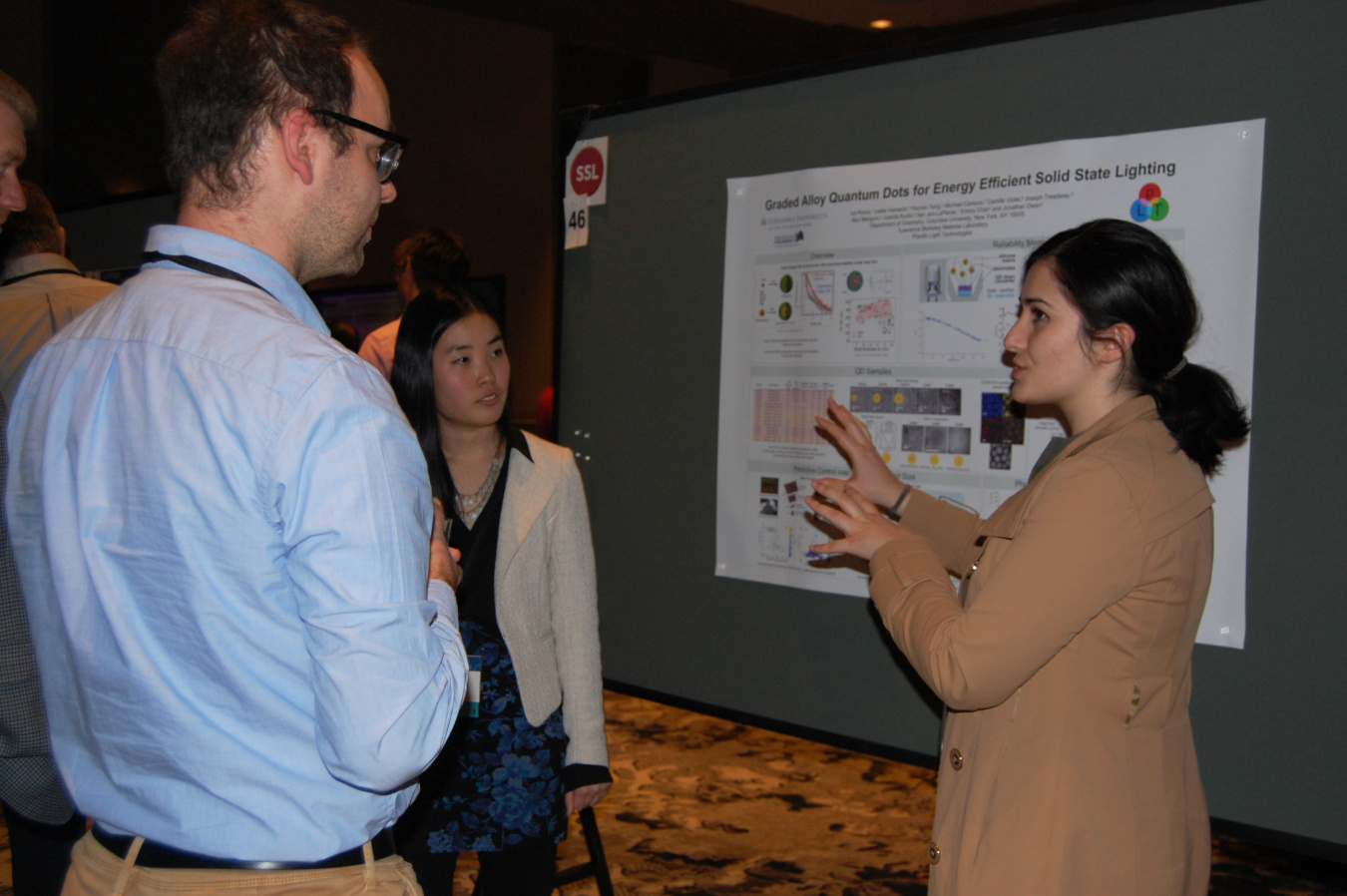
There was a whole lot of connecting going on at DOE’s 15th annual Solid-State Lighting R&D Workshop, which was held in Nashville January 29 – 31. Some of that connecting was between the researchers and lighting experts who’d gathered there from across the country and abroad to tackle the biggest science and technology challenges facing SSL today. Those challenges are so knotty and complex that they can’t always be solved in isolation, but instead call for the kind of synergy that comes from comparing notes, sharing ideas, and working toward common goals. The workshop crackled with synergy, with signs of new collaborations and partnerships being formed nearly everywhere you looked.
But the connecting that went on in Nashville also involved a fair amount of dots – as in “connecting the dots.” That’s because the combination of diverse perspectives and animated give-and-take – with ideas flowing and intellectual sparks flying – served to broaden the context to such an extent that it made it easier to see how a particular problem or issue was related to another one. This didn’t just apply to the interactions between the speakers on any given panel, but also to the two-way interchanges between the speakers and the audience, as well as to the many smaller conversations that took place in the hallways and at the poster session. The result was that everyone left Music City with a great deal to think about.
An Evolving Technology
The workshop kicked off with Matthias Sabathil of OSRAM and Werner Goetz of Lumileds offering their perspectives on how LED lighting will evolve. Matthias talked about the way in which technologies in general evolve, pointing out that the first automobiles looked very much like horse-drawn carriages – the incumbent conveyance in those days – but that car designs eventually broke free of those constraints. His point was that we’re still at a very early stage with LED lighting, with most luminaires still resembling their legacy counterparts, and that once we get past that legacy-bound mindset, the technology still has a ton of headroom left – not only in terms of energy efficiency (we’re only halfway there), but also in terms of SSL enabling new frontiers in lighting and presenting us with opportunities to address such longstanding problems as flicker, glare, and sky glow.
Werner noted key focus areas for LED efficacy improvement, ranging from epitaxy and die development, to narrow-band phosphors and quantum dots, to droop reduction, to converter saturation, to improvements to InGaN green and AlInGaP amber and red. Many of these issues were the subjects of workshop talks or posters, illustrating just how intent industry is on bringing down these technical barriers.

Diving Deep
The workshop breakout sessions took a deeper dive into these and other issues – eight different LED and OLED topics, to be exact, ranging from down-conversion materials and organic stacks to advanced manufacturing. The breakout discussions were nuanced and meaningful and carried over into the poster session, where DOE-funded researchers shared details on their work.
One of lighting’s hottest new frontiers involves human physiological responses to light, which was the subject of a panel featuring experts from Harvard University, Canada’s National Research Council, Virginia Tech Transportation Institute, and the University of California at San Diego. Focusing on how light affects us in realistic settings, the panelists discussed the scientific evidence to date, distinguishing what we know from what we don’t know and identifying the gaps that require additional research. It’s clear that when it comes to understanding the effects of light on the human body, we’re still at a very early stage.

Tuning in to Big Benefits
Those effects depend on our ability to tune the spectra of LED lighting, which was the subject of another panel featuring experts from Telelumen, the University of New Mexico, Lumenetix, and Acuity Brands. They explored the technology challenges associated with tunable lighting, including methods of color mixing, multichannel driver development, novel color sensors, and the testing required to characterize a color-tunable lighting product.
A major hurdle preventing today’s color-tunable luminaires from achieving their efficacy potential is lower efficiencies in green and amber direct-emitter LEDs. Two DOE-funded R&D projects that presented posters in Nashville – one by Lumileds and the other by the University of California at Santa Barbara – are working to quantify and improve the performance of green LEDs, which are hampered by current-density droop and high forward voltage. Both teams are working to quantify the effects of droop and mitigate the high forward voltage that leads to lower wall-plug efficiencies.
The increase in the number of students attending these workshops – many of whom entered DOE’s student poster competition – was gratifying to see, not just because of their infectious enthusiasm, but because their presence augurs well for the new generation of lighting scientists.
